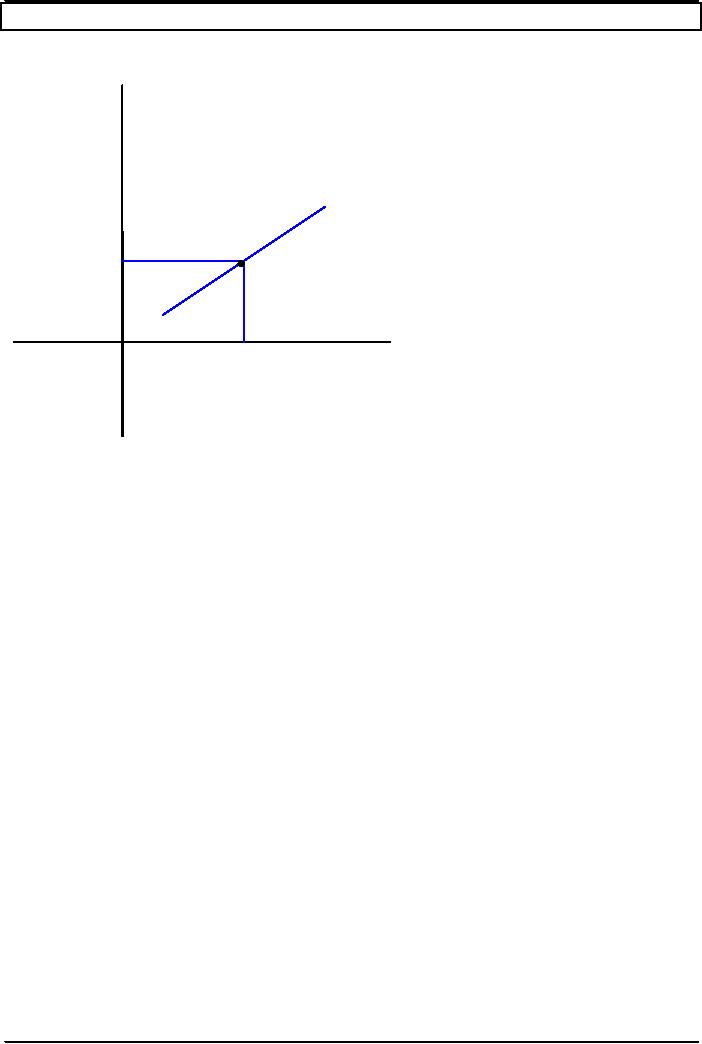 |
THE STRATEGIC POSITION AND ACTION EVALUATION (SPACE) MATRIX |
| << THE STRATEGIC POSITION AND ACTION EVALUATION (SPACE) MATRIX |
| BOSTON CONSULTING GROUP (BCG) MATRIX:Cash cows, Question marks >> |

Strategic
Management MGT603
VU
Lesson
26
THE
STRATEGIC POSITION AND ACTION EVALUATION
(SPACE) MATRIX
These
dimensions are explained below:
Internal
Strategic Position
External
Strategic Position
Financial
Strength (FS)
Environmental
Stability (ES)
Impact
of technology
Risk
involved in business
Price
elasticity of demand
Debt
to equity ratio
Political
situation
Working
capital condition
Leverage
Liquidity
Demand
variability
Ease
of exit from market
Price
range of competing products
Cash
flow statement
Rate
of inflation
Return
on investment
Competitive
pressure
Competitive
Advantage (CA)
Industry
Strength (IS)
Demand
and supply factors
Access
to the market
Resource
utilization
Market
share
Growth
potential
Quality
of product and
services
Profit
potential
Product
life cycle
Financial
stability
Customer
loyalty
Technological
know-how
Capacity,
location and layout
Productivity,
capacity utilization
Technological
know-how
Capital
intensity
Backward
and forward
integration
Ease
of entry into market
After
the selection of variables the rating is
assigned to each. After the
addition of these variables
taking the
average.
For example financial strength is explain
below
Financial
Strength (FS)
Rating
High
Return on investment
3
Large
amount of capital
2
Consistently
increasing revenue
4
Working
capital condition
1
Financial
strength average is (3+2+4+1)/4 =
2.5
The
industry strength is explained as
follows
Industry
Strength (IS)
Rating
Demand
and supply factors
5
Resource
utilization
3
Profit
potential
3
Technological
know-how
6
101

Strategic
Management MGT603
VU
Ease
of entry into market
2
Industry
strength
average
is
(5+3+3+6+2)/5
=
3.8.
It
is
plotted
on
graph:
6
FS
5
4
(2.5,
3.8)
3
2
1
IS
1
2
3
4
5
6
The
graph indicates that firm
adopts aggressive
strategy
Steps
for the preparation of SPACE
Matrix
The
steps required to develop a SPACE Matrix
are as follows:
1.
Select a set of variables to relating to
financial strength, competitive
advantage, environmental
stability,
and industry
strength.
2.
Assign a numerical value ranging
from +1 (worst) to +6 (best) to
each of the variables that
make
up
the financial strength and industry strength
dimensions. Assign a numerical
value ranging from -
1
(best) to -6 (worst) to each of the
variables that make up the
environmental stability
and
competitive
advantage dimensions.
3.
Compute an average score and
dividing by the number of
variables
4.
Plot the average scores in the
SPACE Matrix.
5.
Add the two scores on the
x-axis and plot the
resultant point on X. Add the
two scores on the y-
axis
and plot the resultant point
on Y. Plot the intersection of the new xy
point.
6.
Draw a directional vector from the
origin of the SPACE Matrix
through the new intersection
point.
This
vector reveals the type of strategies
recommended for the organization:
aggressive,
competitive,
defensive, or conservative.
102
Table of Contents:
- NATURE OF STRATEGIC MANAGEMENT:Interpretation, Strategy evaluation
- KEY TERMS IN STRATEGIC MANAGEMENT:Adapting to change, Mission Statements
- INTERNAL FACTORS & LONG TERM GOALS:Strategies, Annual Objectives
- BENEFITS OF STRATEGIC MANAGEMENT:Non- financial Benefits, Nature of global competition
- COMPREHENSIVE STRATEGIC MODEL:Mission statement, Narrow Mission:
- CHARACTERISTICS OF A MISSION STATEMENT:A Declaration of Attitude
- EXTERNAL ASSESSMENT:The Nature of an External Audit, Economic Forces
- KEY EXTERNAL FACTORS:Economic Forces, Trends for the 2000’s USA
- EXTERNAL ASSESSMENT (KEY EXTERNAL FACTORS):Political, Governmental, and Legal Forces
- TECHNOLOGICAL FORCES:Technology-based issues
- INDUSTRY ANALYSIS:Global challenge, The Competitive Profile Matrix (CPM)
- IFE MATRIX:The Internal Factor Evaluation (IFE) Matrix, Internal Audit
- FUNCTIONS OF MANAGEMENT:Planning, Organizing, Motivating, Staffing
- FUNCTIONS OF MANAGEMENT:Customer Analysis, Product and Service Planning, Pricing
- INTERNAL ASSESSMENT (FINANCE/ACCOUNTING):Basic Types of Financial Ratios
- ANALYTICAL TOOLS:Research and Development, The functional support role
- THE INTERNAL FACTOR EVALUATION (IFE) MATRIX:Explanation
- TYPES OF STRATEGIES:The Nature of Long-Term Objectives, Integration Strategies
- TYPES OF STRATEGIES:Horizontal Integration, Michael Porter’s Generic Strategies
- TYPES OF STRATEGIES:Intensive Strategies, Market Development, Product Development
- TYPES OF STRATEGIES:Diversification Strategies, Conglomerate Diversification
- TYPES OF STRATEGIES:Guidelines for Divestiture, Guidelines for Liquidation
- STRATEGY-FORMULATION FRAMEWORK:A Comprehensive Strategy-Formulation Framework
- THREATS-OPPORTUNITIES-WEAKNESSES-STRENGTHS (TOWS) MATRIX:WT Strategies
- THE STRATEGIC POSITION AND ACTION EVALUATION (SPACE) MATRIX
- THE STRATEGIC POSITION AND ACTION EVALUATION (SPACE) MATRIX
- BOSTON CONSULTING GROUP (BCG) MATRIX:Cash cows, Question marks
- BOSTON CONSULTING GROUP (BCG) MATRIX:Steps for the development of IE matrix
- GRAND STRATEGY MATRIX:RAPID MARKET GROWTH, SLOW MARKET GROWTH
- GRAND STRATEGY MATRIX:Preparation of matrix, Key External Factors
- THE NATURE OF STRATEGY IMPLEMENTATION:Management Perspectives, The SMART criteria
- RESOURCE ALLOCATION
- ORGANIZATIONAL STRUCTURE:Divisional Structure, The Matrix Structure
- RESTRUCTURING:Characteristics, Results, Reengineering
- PRODUCTION/OPERATIONS CONCERNS WHEN IMPLEMENTING STRATEGIES:Philosophy
- MARKET SEGMENTATION:Demographic Segmentation, Behavioralistic Segmentation
- MARKET SEGMENTATION:Product Decisions, Distribution (Place) Decisions, Product Positioning
- FINANCE/ACCOUNTING ISSUES:DEBIT, USES OF PRO FORMA STATEMENTS
- RESEARCH AND DEVELOPMENT ISSUES
- STRATEGY REVIEW, EVALUATION AND CONTROL:Evaluation, The threat of new entrants
- PORTER SUPPLY CHAIN MODEL:The activities of the Value Chain, Support activities
- STRATEGY EVALUATION:Consistency, The process of evaluating Strategies
- REVIEWING BASES OF STRATEGY:Measuring Organizational Performance
- MEASURING ORGANIZATIONAL PERFORMANCE
- CHARACTERISTICS OF AN EFFECTIVE EVALUATION SYSTEM:Contingency Planning